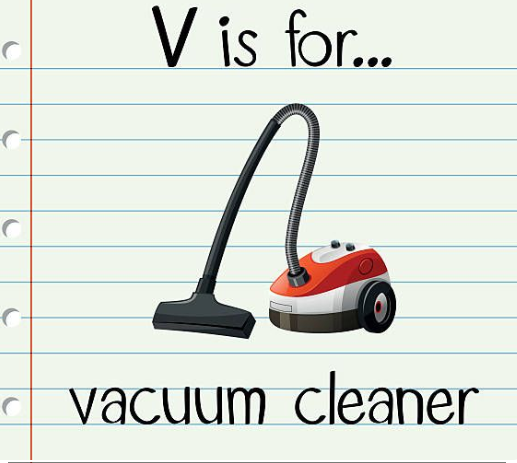ABC's of Recycling,
V is for Vacuums & Vehicles
Oct 30 2023
Letter V covers a lot of ground in the recycling world. (Or a lot of carpet.)
From vacuum cleaners to motor vehicles, we can recycle more than you might think!

Vacuum cleaners
Anyone with a rug, probably has one of these work-saving devices in their home. Whether it’s dust-buster sized or a workshop workhorse, vacuums are common electronic devices. (And one of the most common calls SCARCE gets from people about safe disposal.)
Vacuums are considered electronic waste, also known as e-waste. In our area, electronic recycling takes place at Household Hazardous Waste facilities, as well as at local monthly collections. DuPage County has a Recycling Information page that lists electronic recycling locations and times in 11 local towns for electronics and other household items. Another option is Naperville’s Environmental Collection Campus, (156 Fort Hill Drive, open weekdays,) which accepts e-waste from all Illinois residents.
You can prep your vacuum for disposal by removing all the plastic parts that detach, such as the hoses and brushes. Don’t forget to remove the waste bag from inside. That’s regular landfill trash.
Not up for the trip to Naperville? If you’re out running errands, and traveling near a Best Buy, another option is to take your vacuum to the store. Best Buy accepts stick, robot and upright canister style vacuums for recycling at no charge. Learn more about Best Buy’s in-store recycling here. Got one of each different kind of vacuum? That’s okay! You can bring them up to 3 items per household per day.
Finally, SCARCE always loves the repair-if-you-can option. Most vacuums are pretty simple machines and a little regular maintenance, along with simple repairs, can extend the life of your machines. HowStuffWorks has suggestions for the how-to on cleaning and repairs. See if you can fix it, before you trash it!
Vehicles
Did you know that cars of all makes and models are hugely recyclable?
According to the local Argonne National Laboratory, 25 million vehicles reach the end of their service life every year. Here in the US, about 95% of scrapped cars become part of the auto recycling industry which includes parts recyclers, shredders and material recyclers. Argonne’s white paper on vehicle recycling says 75% of a car can be “profitably recycled.” (see page 19/xix) The steel can be melted down and reused. Rubber in tires can be recycled and reused in combustion energy recovery. Lead acid batteries can be recycled, the lead removed and reused in new batteries. Some plastic parts can also be reclaimed.
Turns out, the car industry is one of the most circular manufacturing economies around!
How do they do it? When it comes to car recycling, there’s a new term to know: demanufacturing. Demanufacturing is the process of dismantling any consumer good, from vehicles to vacuums, then separating and sorting the valuable (or hazardous) materials for recovery and reuse. The news technology website The Verge, highlighted the Ford Company’s proactive green manufacturing of its global fleet. In addition to innovations such as their bio-based seat cushions made from soy foam, (compostable seat cushions! who knew?), the automaker has set a goal to use only recycled and renewable plastics and to create vehicles with parts that can be recycled.
Ready to “demanufacture” your vehicle? Local scrap yards may even pay you to take that vehicle away. Or, consider doing good with that junker and donate it! Many larger charities will help you coordinate the donation of vehicles, even if they aren’t working.
Want to read more about car recycling? Try this guide by GreenCitizen. For details on how the US is doing when it comes to auto waste and recycling, check out the EPAs Facts and Figures list. (Go straight to the A to Z Directory to read about steel, rubber and lead acid batteries in particular.)
